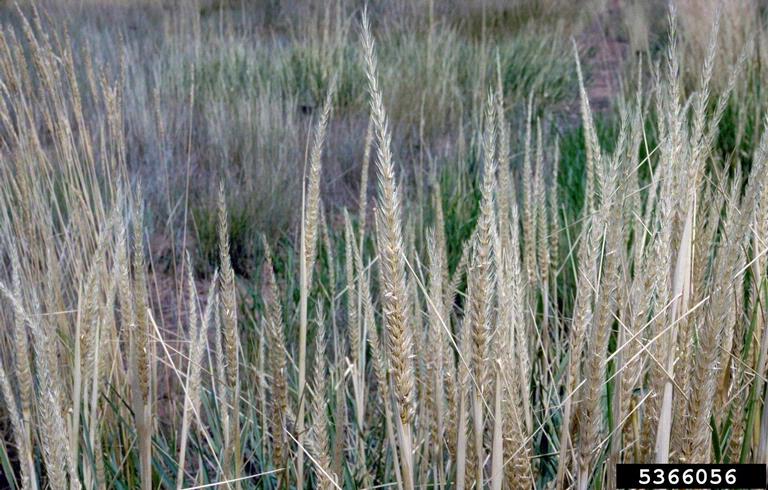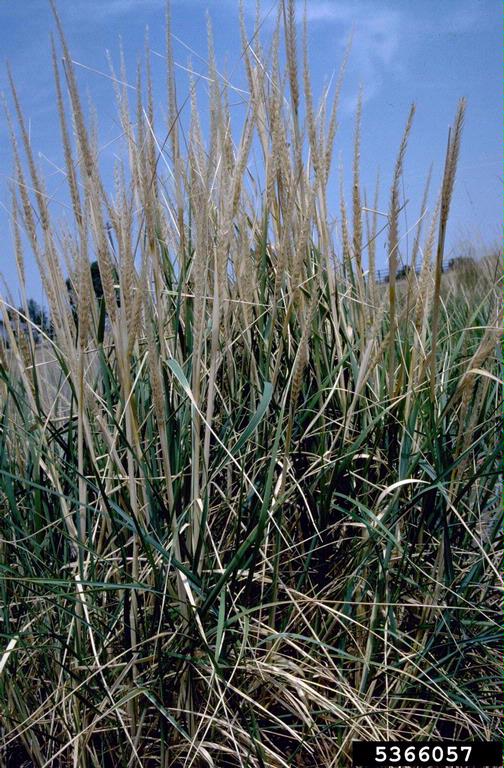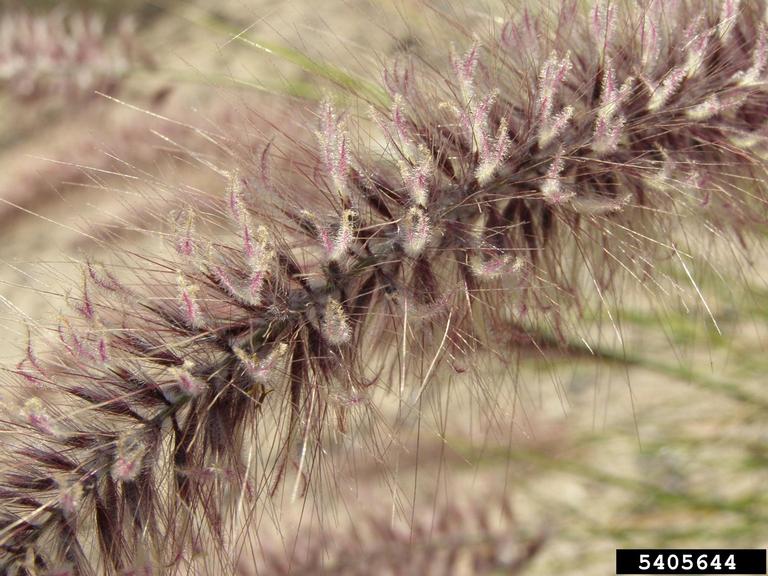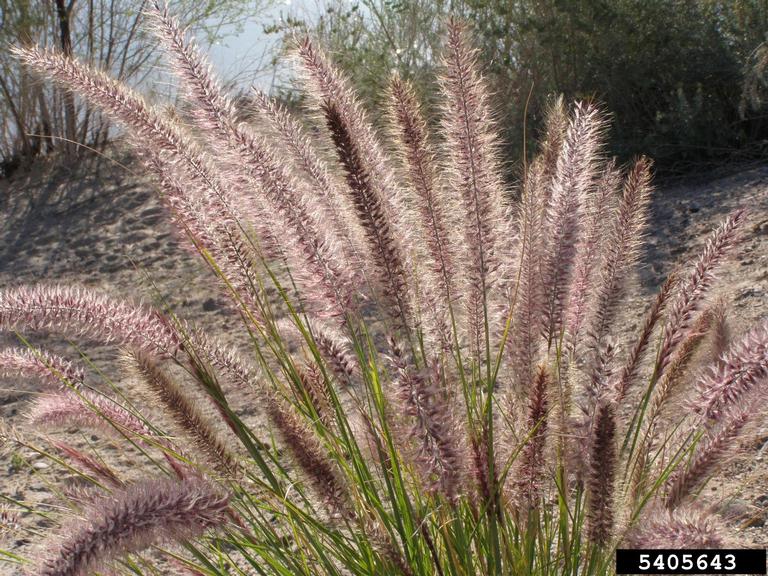Fountain grass
Chinese fountain grass
(Pennisetum alopecuroides)
Biological Category
Plants
NY Legal Status
Not Regulated
Species Type
Grass-like Plant
DESCRIPTION
A popular garden grass, fountain grass is prized for its bottle-brush inflorescence and arching ‘fountain-like’ leaves. Growing approximately two to three feet in height, the species is most conspicuous when it blooms towards the end of the summer and fall, producing pinkish white to brown flowering spikes.
Note: Research for these pages was generated from citations listed. References for specific statements available upon request.
Fountain grass was intentionally introduced via the horticultural trade from Asia. The species is now naturalized in at least six states, although its potential expansion range covers many more.
Although Fountain grass prefers moderately fertile, freely draining, moist to wet soil in full sun, it is relatively drought tolerant and grows well in part shade. The species is commonly found naturalizing in lawns and waste spaces, old fields, wet meadows, roadsides and golf courses.
Fountain grass is wind pollinated. Seed is largely dispersed by wind, however, due to the seeds’ long bristles, dispersal by mammals is possible, as well. Anecdotal reports suggest this species spreads more easily in warmer climates, although this has not been studied. Vectors include wind, horticultural trade and possibly mammals.
As a relatively new invader in the Northeast, little is known about the ecological impacts of Fountain grass in this region. Capable of reproducing both via seed and underground runners, this species has been identified as invasive in several mid-Atlantic states, where it readily spreads into natural areas. The species tendency to form dense aggregations can cause alterations in the diversity and heterogeneity of the herbaceous layer in the communities it invades.
There is no biological control agent available at this time.
Pulling / Digging Up: There is very little information available on hand pulling Fountain grass to control invasive populations. However, other bottle-brush grasses can be controlled using this technique if all below-ground plant material is carefully removed.
Mowing: Mowing and other forms of cutting will eliminate seed rain but will not eradicate Fountain grass.
Girdling: Not applicable
Prescribed Fire: No information available
Prescribed Grazing: The young leaves of fountain grass are palatable to herbivores.
Soil Tilling: No information available
Mulching: Landscape fabric has been utilized in combination with other control methods to achieve some measure of success.
Solarization: No information available
Hot Foam Spray: No information available
The pesticide application rates and usage herein are recommendations based on research and interviews with land managers. When considering the use of pesticides, it is your responsibility to fully understand the laws, regulations and best practices required to apply pesticides in a responsible manner. At times, the pest you seek to treat may not be on a pesticide label, requiring a 2ee exemption from NYSDEC. Always thoroughly read the label of any pesticide and consult the NYSDEC or a licensed pesticide applicator with questions.
Foliar Spray: A foliar spray of glyphosate or quinclorac during growing season is most effective at controlling infestations of Fountain grass. Always read and follow all directions on the herbicide label and take care when applying in wet areas.
Cut Stump: Not applicable
Basal Bark: Not applicable
Stem Injection: Not applicable
Pre-Emergent Spray: No information available
General management overview and recommendation: As with any other invasive infestation complex, Fountain grass is best managed via a combination of mechanical and chemical means. Very small populations may be effectively controlled by careful hand pulling. Larger populations may warrant foliar spray application. All managed infestations should be monitored for several years to manage any germination of new seedlings or re-sprouting of remaining roots that occurs. New seedlings can be hand pulled or sprayed.
Post-treatment monitoring: Controlled populations should be revisited for several years to ensure no germination of new seedlings or re-sprouting has occurred.
Pulled Fountain grass can be composted so long as all roots are thoroughly dried first, and management occurred prior to seed set.




